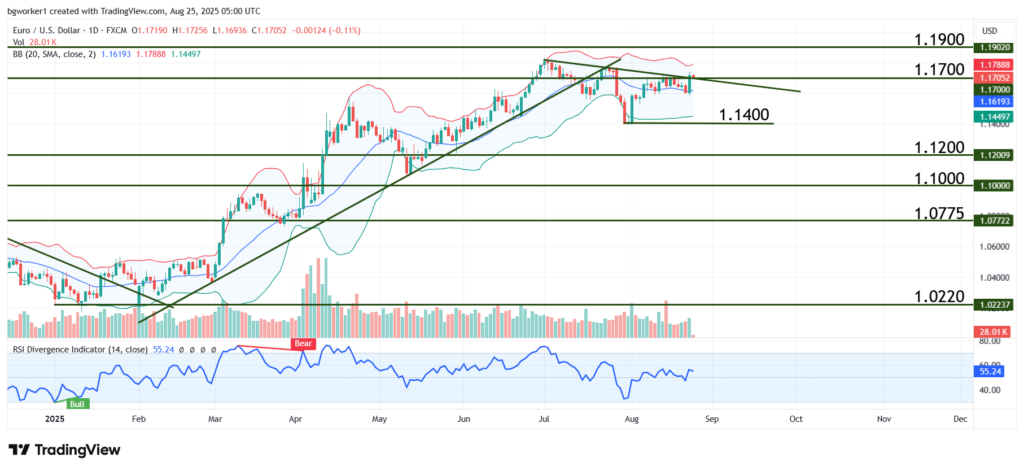Dollar Tumbles as Powell Points Towards Rate Cut. PCE Next
EUR/USD Tests Resistance After Powell’s Comments
Last week’s main attraction was Jerome Powell’s last speech at the Jackson Hole Symposium as Fed Chair, and it didn’t fail to deliver volatility. Friday, the dollar fell across the board as Powell pointed towards a rate cut in September and adopted a dovish stance; however, he did not flat-out say that a rate cut is set in stone, but pointed to risks coming from both the labor market and inflation.
The US Dollar Index (DXY), which measures the greenback’s performance across a basket of 6 major currencies, fell from 98.60 at the start of Friday’s trading session to 97.55 after Powell’s speech. EUR/USD traded around 1.1600 before the speech, but it ended Friday’s trading session at 1.1717.
According to the CME FedWatch tool, the chances of a September rate cut rose from around 72% (Friday, before Powell’s speech) to 85% after the Fed Chair’s comments. However, at the time of writing, the probability has changed again, now sitting at 75%.
New inflation data will be released this week, which means the markets will receive new insights, and the probability of a rate cut will be modified again, most likely.
Economic Calendar Highlights
The first three days of the week will be relatively slow, without major economic releases. The CB Consumer Confidence survey will be released on Tuesday at 2:00 pm GMT, but its impact is usually muted unless the actual numbers differ a lot from the forecast.
The first potential market-mover is set for release on Thursday at 12:30 pm GMT in the form of the U.S. Preliminary GDP, which is the main gauge of an economy’s performance. The forecast is 3.1%, slightly above the previous quarter’s 3.0%.
The highlight of the week will be the release of the U.S. Core Personal Consumption Expenditures index (PCE), scheduled for Friday at 12:30 pm GMT. This is the Fed’s preferred inflation gauge, but it is somewhat overshadowed by the CPI, which is released about 10 days earlier. The forecast is 0.3%, the same as the previous, but any number above this would signal to the Fed that inflation is heating up and may affect the chances of a rate cut.
Technical Outlook – EUR/USD
The pair finished last week right on the resistance at 1.1700, with a long bullish candle and increased volume. At the time of writing, we cannot consider the level broken because a daily candle did not clearly close above it. It must be noted that this is also a confluence zone created by the bearish trend line and the horizontal level at 1.1700, meaning that it will be hard to break, but if it happens, it will be a significant development.
A break of the level will probably send the pair closer to 1.1900, while a rejection would signal that the uptrend is ending. A failed break would also open the door for a deeper drop, with the lower Bollinger Band as a first target.
